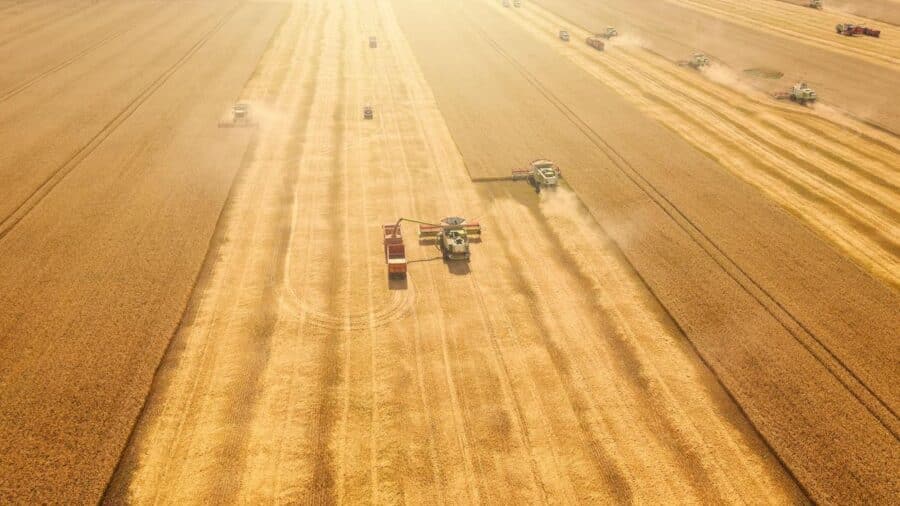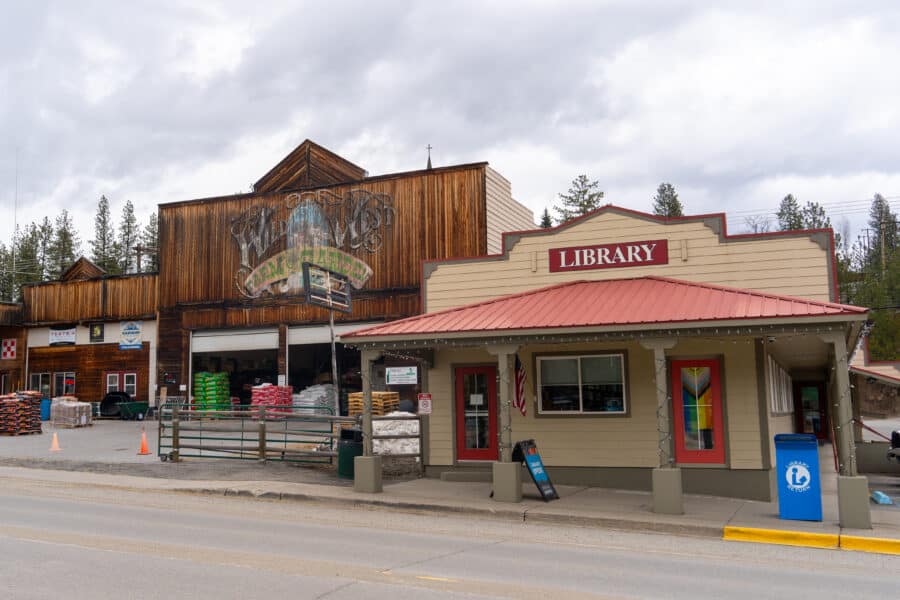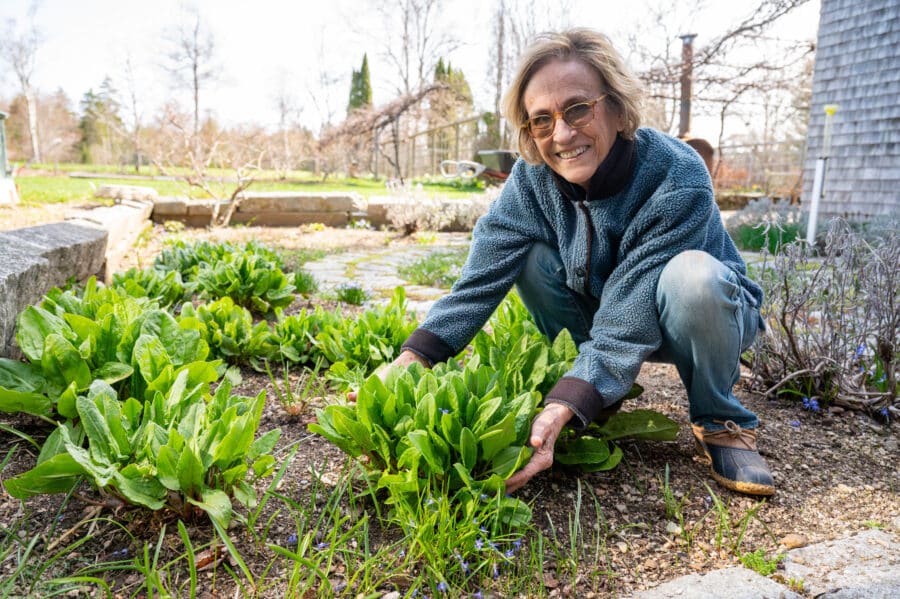We count on farmers to voluntarily protect our lake and rivers from pollution. As it stands, the lake is better off because a cash-strong family farm operation controls more acres near it. The large family farm corporation is a leader in conservation—it can afford to conserve. You want to root for the cash-strapped farmer who would have liked to rent that ground. But who is the better steward, and who can be more resilient in the face of enormous challenges ahead? The way it is set up, we depend on noblesse oblige.
Why Farms Got Bigger and People Fewer
Pulitzer Prize winner Art Cullen explains


A 155-acre farm near the Storm Lake airport, not far from the lake, sold in 2016 for $12,000 per acre to a Nebraska family with marital ties to a family that works thousands of acres around Storm Lake. That land would have fetched $1,600 per acre in 1990. The sale occurred amid a stream of four consecutive losing years for Iowa farmers. The older farmers still can bid a premium for land because they’re sitting on cash from when prices were high ten years ago. The ones locked out of the land auctions are the 20% of younger farmers who are under tremendous financial stress, according to Iowa State University research. Banks are not making loans on that steep a price. They get nervous at $10,000. It goes to show that land is flowing every year into stronger hands that can pay cash.
The wrench of efficiency turns and squeezes and turns. Every year, farms grow larger and people fewer.
Everything about agriculture boils down to yield and price. How much corn will the land yield? What is the price of corn this morning? Those are two of the daily topics of conversation in rural Iowa, along with the weather and who died to leave a farm that might come up for auction. Crop yields and commodity prices, plus weather and soil type, are big factors that determine how much land is worth. Farmland value is the foundation of the state’s wealth, as we learned during the implosion of the farm crisis.
Commodity markets are volatile. A drought in Brazil can send soybean prices wild in a week. Mind- boggling corn yield increases through genetic engineering—30% over the past 15 years— combined with low energy prices caused corn prices to drop in half since 2009. The one thing the farmer believes he can control is yield—he cannot control the weather or the markets in Chicago’s grain- trading pits, but he always shoots for the moon on yield when he makes his final seed and chemical purchases during the girls’ state basketball tournament in March.
The farmer who paid cash for his land, or has little debt against it, can make money almost any year if he doesn’t have a banker on the payroll. Those are the older, larger operators. They can afford to leave alone that grass strip next to Powell Creek that wends to the lake through their farm. They can put in a bioswale to filter field runoff to the river, expecting no real reward except in heaven. But the farmer who rents land and is losing needs to plant through the river to make it, or so he thinks.
When my neighbor across the street, Steve Drey, was still a plowboy in 1980, he thought 125 bushels per acre were okay and 150 bushels of corn were a bin buster. If you can’t hit 200 bushels per acre with your corn yield now, you had better figure out a new occupation in town. Every few years even I could make money at farming during price bubbles such as we saw during the 2008 ethanol boom in consumption. But prices always fall back as growers here and in Brazil rip up more fallow acres to ride those price crests. We always overproduce. It is the chronic problem of the Iowa farmer. Even the most efficient corn grower has to tumble the dice just right to scoop up a profit in the average year. Every year he thinks he will roll sevens.
There is no margin for error. You fertilize or perish. So you fertilize. You put fertilizer on every available acre, because rent is rent. You buy crop insurance to set yourself a bottom. You drain that flat ground or you perish. You lay tile, and you plant up to the riverbank. We are applying five times more fertilizer than we were fifty years ago. We’re losing more than a third of that nitrogen fertilizer we apply by its leaching out to the drainage tiles. (Nitrogen also happens to be as problematic a greenhouse gas as carbon dioxide in terms of climate change. Chemical agriculture is compounding global warming.)
Nature left us only so much glacial till. Competition to control that rich land is intense. As bigger farms competed for fewer available acres, cash rents paid by farmers to landlords tripled around 2008. The cost of buying land shot up tenfold from 1992 to 2012. Land prices have stabilized for now thanks primarily to crop insurance, which provides a baseline to farm income when prices or yields tank. To protect the land’s market value, owners lay corrugated plastic drainage tiles forty feet apart now. They were eighty feet apart a decade ago. The tile installers have stayed busy right along.
“You got everything you need out here, if you can only see it,” my father‑in‑law reminds me every year. You do if that is how you want to play it. But who does anymore?
The ones farming 1,200 to 2,000 or 5,000 acres today were reared on farms of 500 acres or fewer with cattle and hogs. All of them were. Most raised chickens. Some had dairy cows. Not today. They are now asset managers. They manage grain inventories, interest rates, custom harvest and chemical applications, cash flows, and machinery maintenance. They don’t have time to chase calves in March around an 80‑acre pasture. They did before the farm crisis. Farms were smaller then, and internally diversified.
When the kids from Early, 12 miles south, got off the school bus you knew they were here. That smell of livestock would gently waft momentarily. You can’t get the aroma off you when you have been around hogs just before the bus arrives. Back then it smelled like money.
None of those kids was rich. But they had everything they needed. They knew how to work.
But this land became too valuable for grazing and diversity. You grow corn and soybeans, that’s all there is to it. You are a specialist. You pack more corn plants into an acre. You substitute chemical herbicides for human labor of pulling weeds; you don’t need those farm kids to walk beans anymore. A 35-year-old farmer has heard of people pulling weeds by hand, but he has never done it. He might yet, as the weeds are figuring out the herbicides and growing resistant to the omnipresent Roundup patented by Monsanto. The life cycle of silver bullets like Roundup lasts 20to 30 years, until the chemist has to roll out a new silver bullet.
“You know, I think we were all better off when we were growing 125-bushel corn on 320-acre farms,” said my neighbor Steve, one of those Early farm boys who had to move to town and take a job as a parts man at the tractor store. He figures on working until he is 80 because he wasn’t sharp enough to get a government job and quit at 58.
His brother Dean farms the family place. One of Steve’s classmates who used to be a big strapper has shrunk into the appearance of a man broken by farm chemicals chasing bumper corn yields. His shoulders are hunched over. He has to sit down. He has farmer’s lung from too much sniffing around anhydrous ammonia, herbicide, and hog houses. He had to quit farming, our friend. He had to rent out the land to a cousin farming a thousand acres or more.
From Storm Lake by Art Cullen, published by Viking, an imprint of Penguin Publishing Group, a division of Penguin Random House Publishing. Copyright © 2018 by Art Cullen.
Art Cullen is the editor of the Storm Lake Times Pilot of Storm Lake, Iowa, and the editor of The Progressive Populist magazine. In 2017, Cullen won the Pulitzer Prize in Editorial Writing for a series of editorials about a how industrial agriculture lobbyists and local elected officials conspired to thwart environmental regulations that protected public waters. He is the author of Storm Lake: A Chronicle of Change, Resilience, and Hope from a Heartland Newspaper (Viking).
Have thoughts or reactions to this or any other piece that you’d like to share? Send us a note with the Letter to the Editor form.
Want to republish this story? Check out our guide.
More from Barn Raiser

Spearfishing Makes a Splash in Michigan







